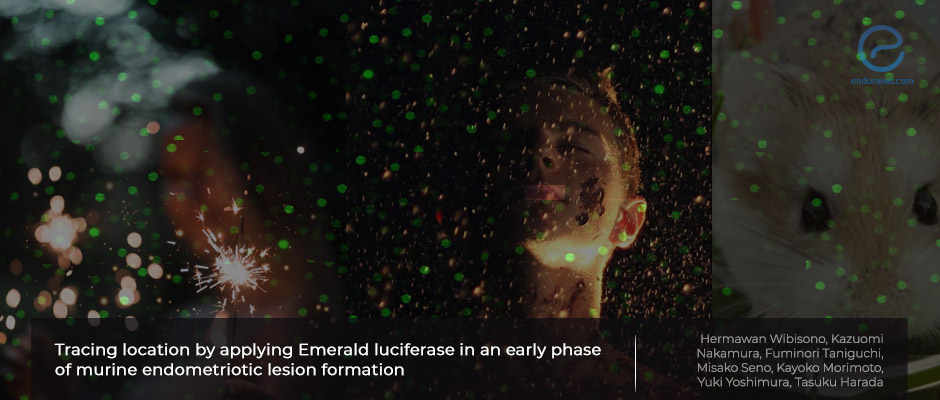Shining like fireflies: a new approach to visualize early endometriosis
Mar 8, 2022
A novel animal model for endometriosis allowing live lesion imaging
Key Points
Highlights:
- A new mice model for endometriosis may allow evaluating the earliest phase of endometriosis by in vivo imaging, visualising by the Emerald luciferase gene.
Importance:
- As a novel endometriosis animal model, this technique will allow tracing the migration of endometriosis lesions non-invasively and would lead to studies to follow the related gene expressions.
What's done here:
- A transgenic mouse expressing Emerald luciferase under the control of a CAG promoter.
- The uterine tissues of transgenic mice were implanted into the wild-type mice intraperitoneally, and the recipient mice were administered different doses of E2.
- The journey of the transplanted tissues was followed by fluorescence microscopy imaging.
- The regions that the transplants lay on, their weight, fluorescence intensity, and their fate were calculated by imaging based on the different E2 doses.
Key Results:
- This mice model allowed monitoring on very short light exposure times, even very small and deep tissues in a very early phase.
- The intensity of luminescence was dependent on the E2 concentration, allowing detection by 50mg of weight change; and the accuracy was high.
- Necrosis of transplants revealed a decrease in luminescence.
Limitations:
- The study presents a suitable animal model for endometriosis studies but still needs to be improved.
Lay Summary
Endometriosis is a complex and unsolved disease that requires animal studies in order to understand its nature. There are a group of animal models designed for endometriosis studies, but most require sacrificing the animal.
In the experimental study designed by the team led by Tasuku Harada, the authors announced a novel animal model which would allow noninvasive monitoring of the lesions with the help of luciferase enzymes. Emerald luciferase vector is used to generate the transgenic mouse. After the vector creation, The uterine tissues of transgenic mice were implanted into the wild-type mice intraperitoneally. The journey of the transplanted tissues was followed by a fluorescence microscopy imaging system on days 0-3-7 and 14 while the donors have been taking E2 in lower and higher doses.
The regions that the transplants lay on, the weight of the lesions, and the fluorescence intensity have been calculated by imaging techniques in order to show the effects of different E2 doses on lesion growth and the regions that endometriotic tissue likes to see the fate of the lesions after transplantation. The model allowed monitoring on very short light exposure times such as 10 seconds, and with very small and deep tissues even in a very early phase of endometriosis.
The lesions were monitored in the transplantation site and also intraperitoneally on the pancreatic surface.
The intensity of luminescence was found to be dependent on the E2 concentration with high accuracy to detect 50mg of weight change, and the necrotic situation was detected by a decrease in the lesion luminescence.
The results showed a promising detection model for endometriosis which would allow further investigations by detecting early lesions on young girls and also following the results of new drug therapies on lesion sites. This interesting study is recently published in the journal named Experimental Animals.
Research Source: https://pubmed.ncbi.nlm.nih.gov/34819403/
animal model diagnostic tool luciferase transgenic embryo IVF imaging visualization E2 transplantation

